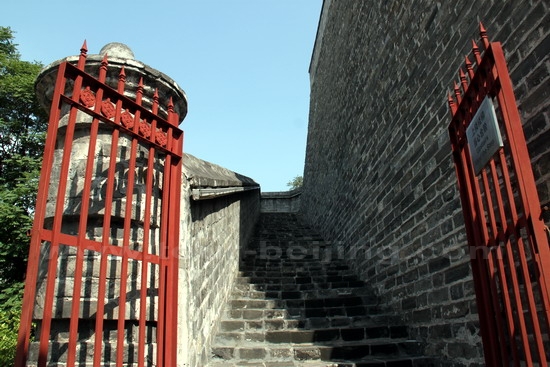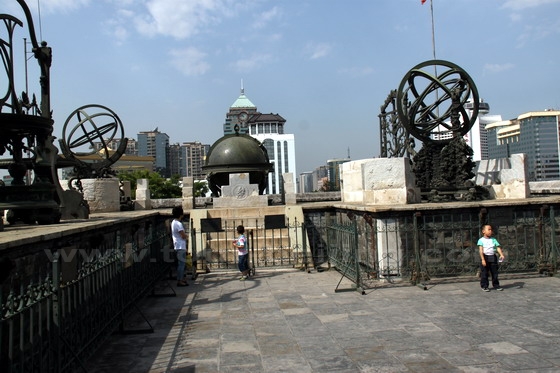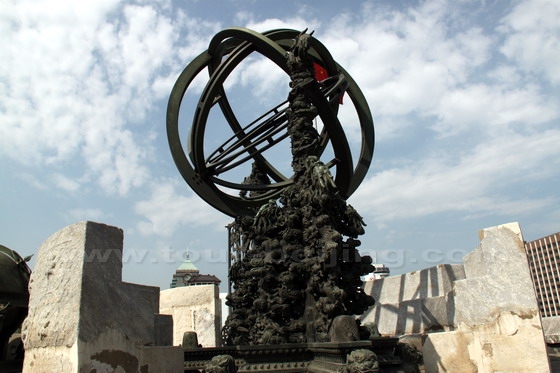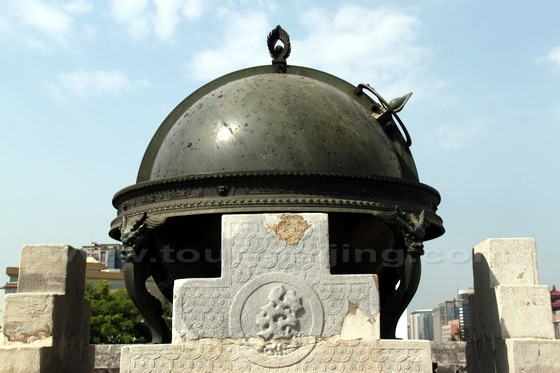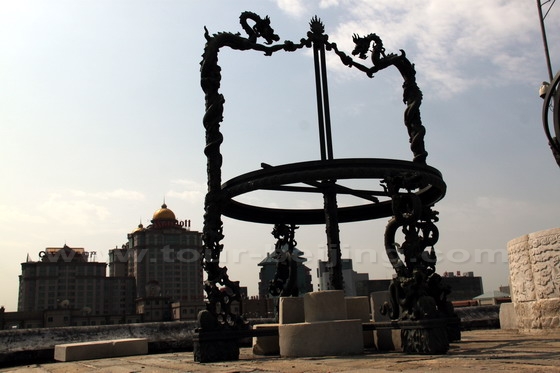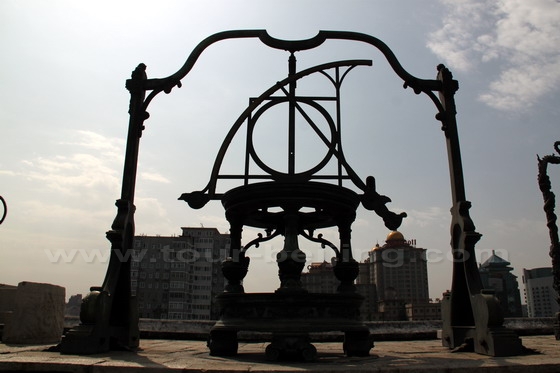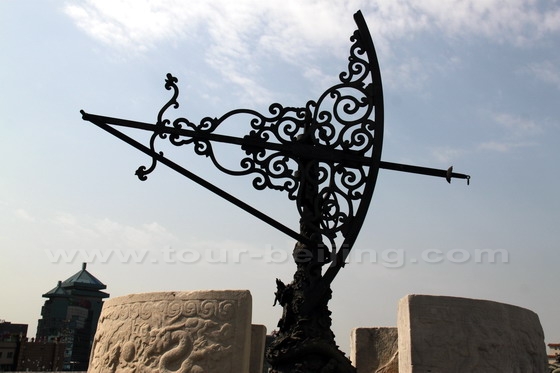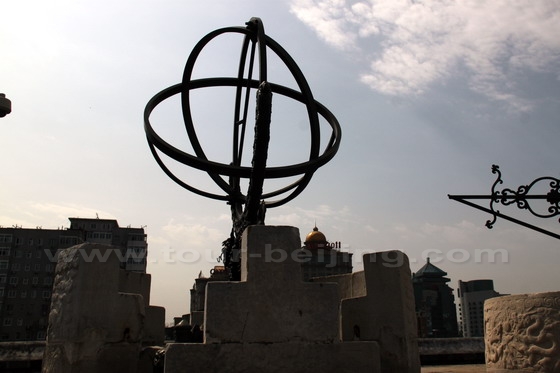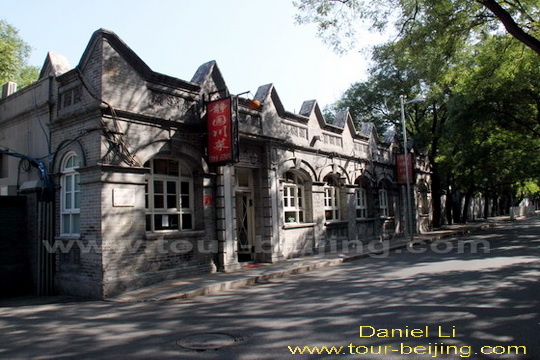In 1900, Field Marshal von Waldersee, as Allied Supreme Commander in China in 1900-1901, was amazed by the ornately made ancient astronomical instruments of Chinese-Western style placed on the top of the castle-like platform of Beijing Ancient Observatory. He ordered to have 5 of the most spectacular astronomical instruments taken to Germany.
In 1907, all the 5 astronomical instruments were shipped to Berlin and placed on the lawn of the royal garden in Bustan Palace including 1) A New Armilla, built in 1744 2) A Celestial Globe, built in 1673 3) Altazimuth, made in 1672 4) Sexant, made in 1673 5) Azimuth Theodolite, made in 1715. It wasn’t until in 1921 did all the five pieces were returned to Beijing Ancient Observatory under the Item 131 of the Treaty of Versailles.
Plan your Beijing tour? If you have a passion for Chinese history and ancient astronomy in particular, surely you cannot afford to miss a glimpse of these magnificent astronomical instruments.
Walk up the 90 stone steps up to the 14m high castle-like square tower to view these instruments with a backdrop of modern buildings nearby, definitely giving you a strong feeling of timeline and better understanding China’s past, present and future.
The 14m high castle-like square tower that holds these 8 most magnificent astronomical instruments. Take subway line 1 and get off at the station of Jianguomen, exit from Exit C and you will see the massive tower.
Climb the 90 stone steps up to the top of the 14m high castle-like square tower
New Armilla
Made in 1744 for the purpose of determining true solar time as well as the right ascension difference and declination of celestial bodies.
Celestial Globe
Made in 1673 for the purpose of determining the rising and setting time and azimuth of celestial bodies as well as their altitude and azimuth at any other time.
Ecliptic Armilla
Made in 1673 for the purpose of determining ecliptic longitude difference and latitude of celestial bodies as well the 24 Solar Terms.
Altazimuth
Made in 1672 for the purpose of determining the azimuth of celestial bodies.
Azimuth Theodolite
Made in 1715 for the purpose of determining the azimuth and altitude of celestial bodies.
Sexant
Made in 1673 for the purpose of measuring the angular distance between two stars less than 60 apart as well as angular diameters of the sun and the moon.
Equatorial Armilla
Made in 1673 for the purpose of dtermining the true solar time as well as the right ascension difference and declination of celestial bodies.
Tip: Hassle-free Beijing Guided Tours
If you don’t want to go the do-it-yourself route and prefer the hassle-free escorted tours, here are some options for Beijing guided tours:
Beijing Day Tour
Beijing Tour Packages
Beijing Winter Tour
Beijing Autumn Tour
Great Wall Tour
Car Rental in Beijing
Beijing Tours
China City Tours
China Tour
Further Readings
Best Time to Visit Beijing
How to plan a trip to Beijing
Top 10 Attractions in Beijing
How to Visit Forbidden City
How to Visit Temple of Heaven
How to Visit Summer Palace
How to Visit Ming Tombs
How to Visit the Great Wall of China
How to Visit Tiananmen Square
How to Visit Hutongs
How to Visit Olympic Sites
Top 10 Markets in Beijing
Top 10 Shopping Malls in Beijing
Beijing Shopping
Wangfujing Walking Street
Qianmen Commercial Street
Gui Jie ( Ghost Street) Food Street
Any questions, just drop a line.






